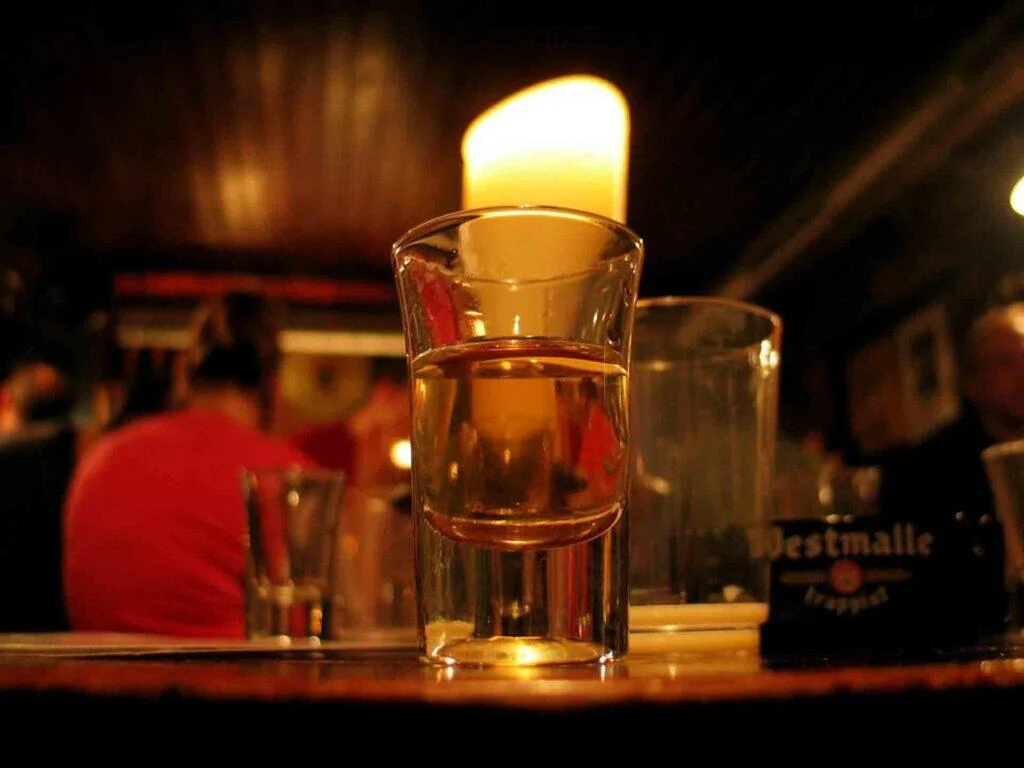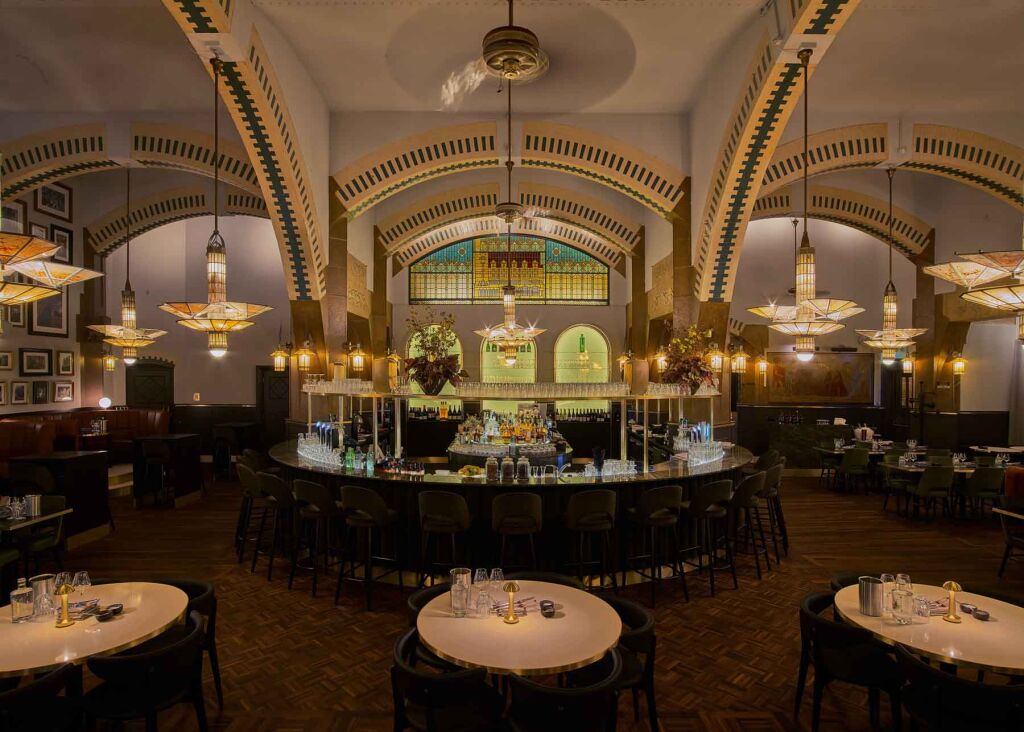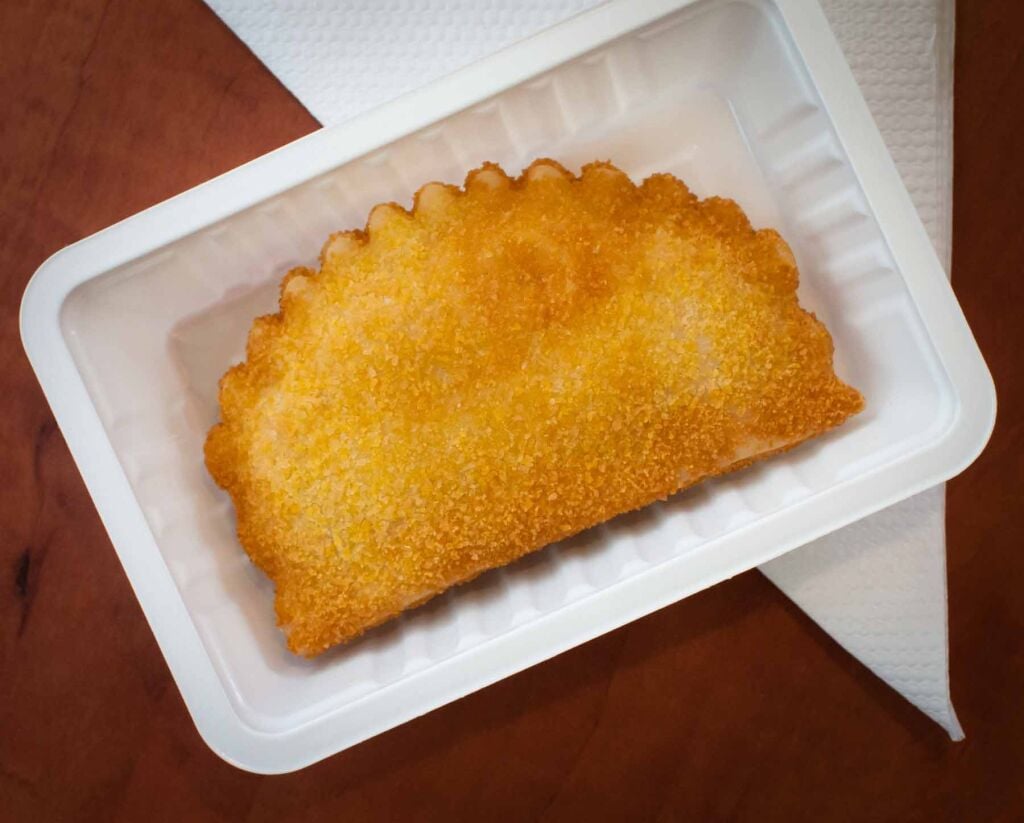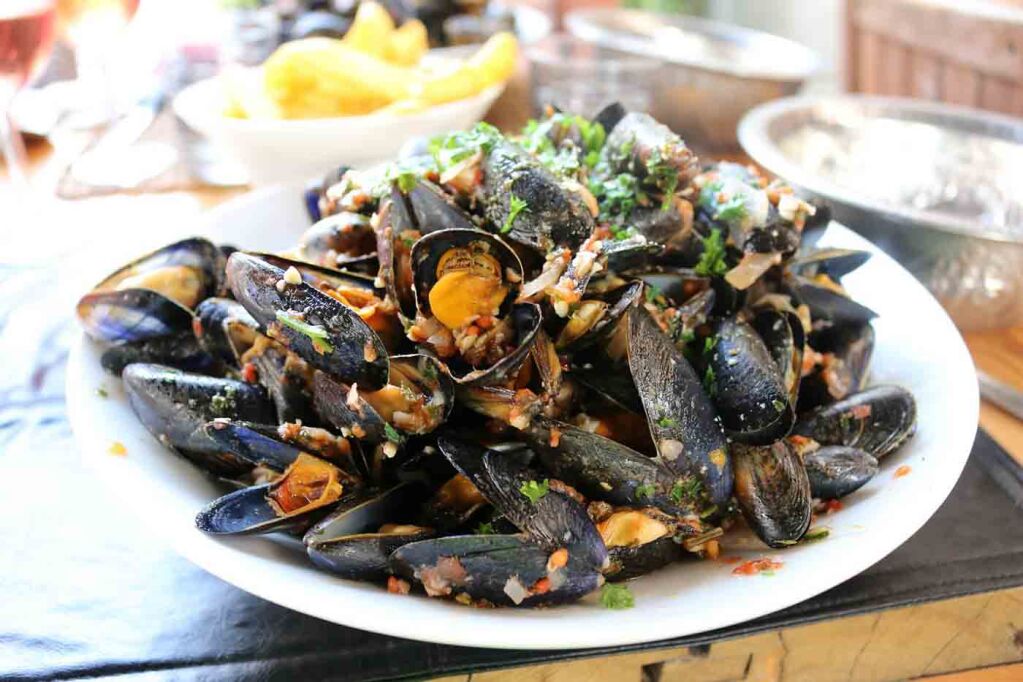Along with iconic artists, colorful tulip fields, and tasty cheese, The Netherlands is renowned for a particular liquor. Jenever, a centuries-old, juniper-flavored spirit, is a source of pride for both the Dutch and the Belgians.
Sampling some is always a highlight of my Amsterdam food tours, as this malty drink is such an important aspect of the country’s culture and history. In this guide, I’ll dive into the types of jenever, the backstory, the production process, and the best places to try a glass of this beloved beverage.
The Cultural Significance of Jenever
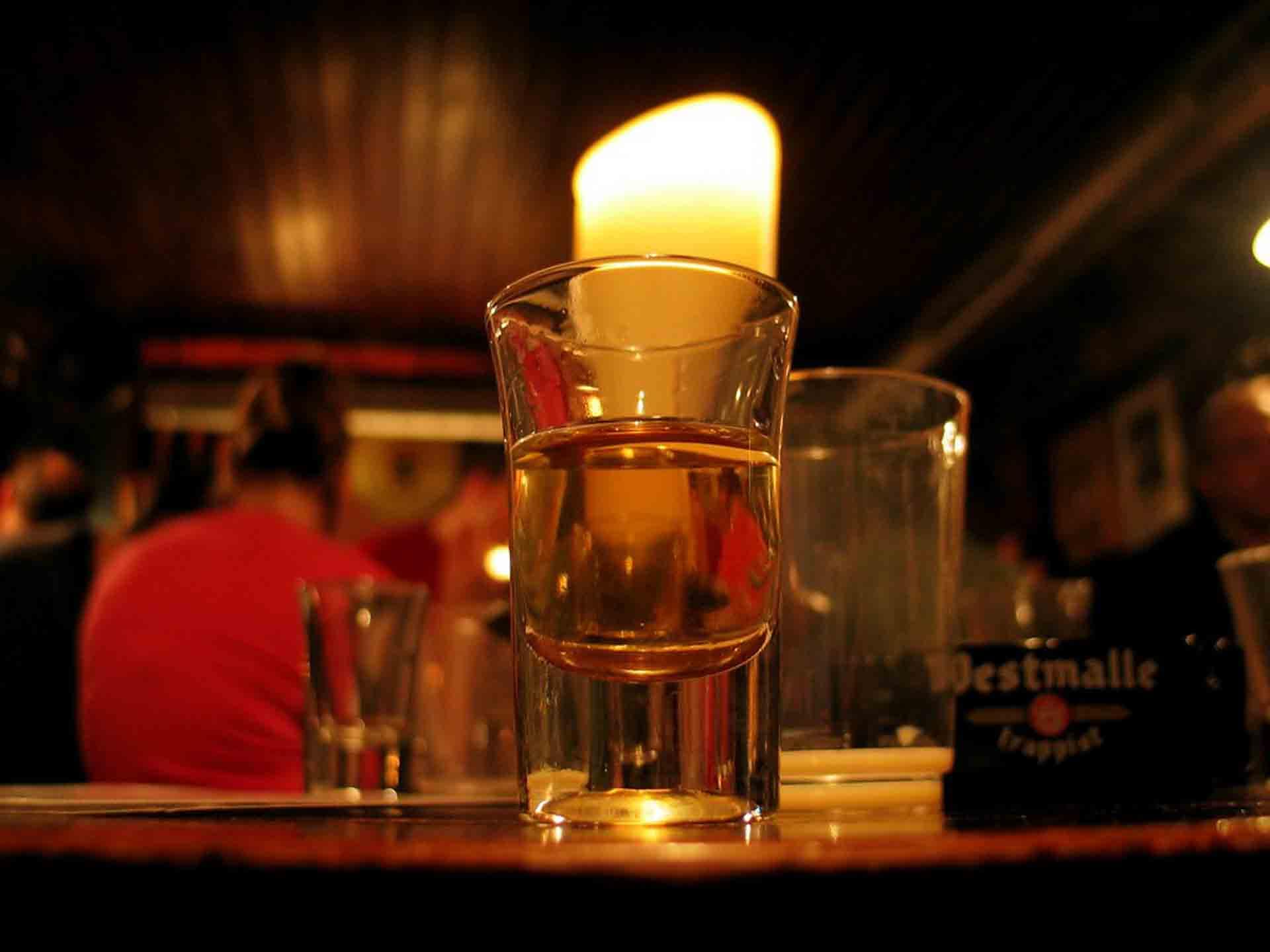
Jenever has been a hugely significant part of Dutch and Belgian culture since the Middle Ages and is regularly enjoyed in social settings. The ritual of drinking jenever is so ingrained in Dutch traditions that it achieved Intangible Cultural Heritage status from UNESCO!
In its most authentic form, jenever is served in a tulip-shaped glass alongside bitterballen, which are meaty, deep-fried snacks.
Protected Status and Geographical Indication
Jenever was granted a Protected Geographical Indication (PGI) from the European Union in 2008. This means it can only be produced in specific regions associated with its origin. In this cave, those areas are select pockets of The Netherlands, Belgium, Germany, and France.
Schiedam, Amsterdam, Groningen, and Delf are the Dutch regions best known for their jenever production. Over the years, jenever has continued to play a central role in maintaining the cultural heritage of these areas and also serves as a key commodity for local economies.
The History and Origins of Jenever
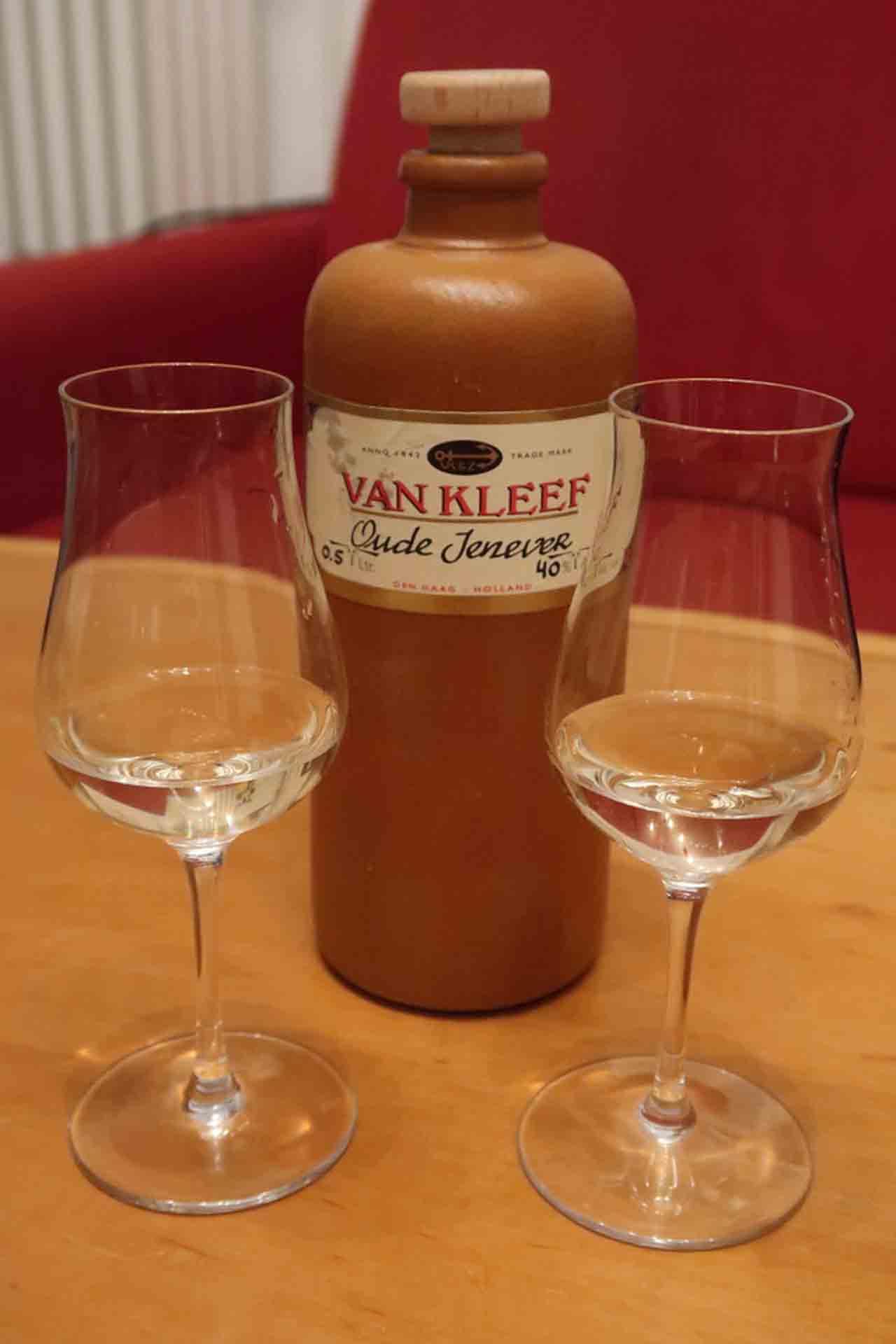
Jenever has a fascinating history and origin story. It was crafted in the Low Countries in the 16th century, and at the time, it was used as a medicinal tonic. There’s some debate about the actual creator, though some say it was invented by a German scientist called Dr. Sylvius.
At first, it was made by distilling malt wine. Juniper berries were infused to boost the health benefits, as they’re believed to contain anti-bacterial and anti-inflammatory properties. Additionally, the Dutch spice trade meant that quality herbs could be added to enhance the taste.
Although it was initially produced to treat various illnesses, it soon became a desirable drink in its own right. Not long after, during the Thirty Years’ War, British soldiers began sampling jenever, and it’s said that this was the event that inspired the creation of English-style gin.
Types of Jenever: Oude vs. Jonge
There are two primary types of jenever. Oude or old varieties have a higher malt wine percentage and generally offer a richer flavor profile and grainier texture. Jonge or new jenever differs from the traditional oude version, with a lower malt wine content and a lighter, fresher taste.
In some bars, you’ll find other jenever styles, including korenwijn, an old-school aged spirit, and flavored alternatives.
How Jenever is Made
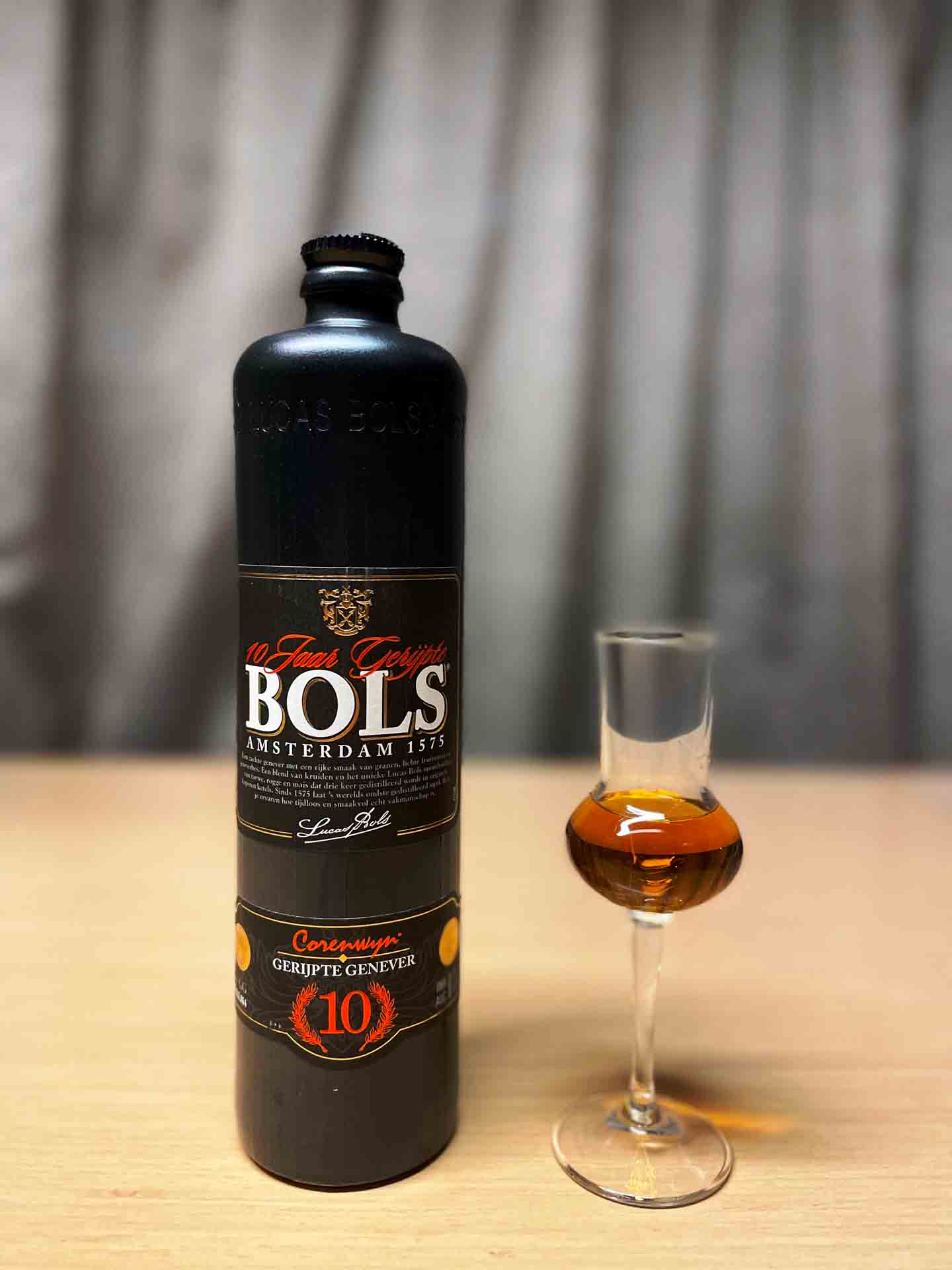
The production process for jenever can vary depending on the specific style and brand. In most cases, it begins with the distillation of malt wine, which comes from wheat, rye, corn, and barley.
This initial distillation takes place in column stills, and this usually yields spirits with a high alcohol percentage. It’sthen distilled twice in a pot still, producing lower-alcohol jenever. During the second distillation, juniper berries and other botanicals are infused with the mix.
Comparing Jenever to Gin and Whiskey
Jenever is often put in the same category as gin, and it also has several similarities to whiskey. Nonetheless, the three boast unique characteristics. All of these liquors begin with a grain mash, but whiskey requires a much longer aging process, and gin uses one spirit rather than the two involved in jenever production.
In terms of flavor, both jenever and gin have citrusy, juniper flavors, with the former having a maltier taste. Whiskey, on the other hand, tends to have oaky caramel tones.
The differences between jenever, gin, and whiskey also transpire in the way these drinks are served and consumed, including specifics for glassware and accompaniments.
Where to Try Jenever: Distilleries and Tasting Rooms
Bols
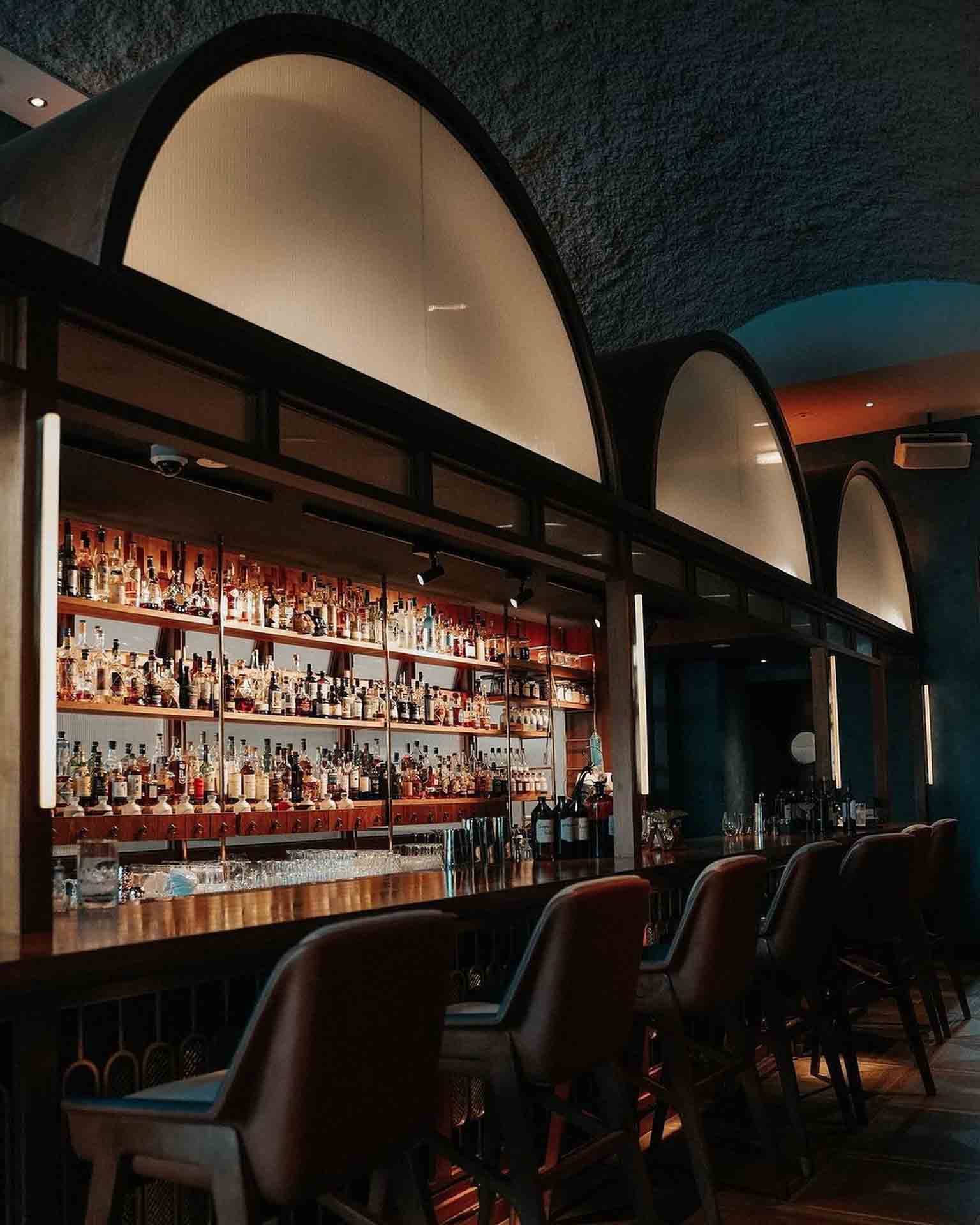
Photo credit: Bols
Bols in Amsterdam is The Netherlands’ most iconic jenever distillery, and their cocktail experience will give you an unbeatable introduction to this treasured spirit.
My friends and I had a blast doing the self-guided tour, which ended with a complimentary drink in their ultra-modern mirror bar. I chose the ‘blood red orange’ cocktail, which combined sweet jenever and cane sugar with zesty lemon and orange.
Bols (€€) – Paulus Potterstraat 12 14 16, 1071 CZ Amsterdam, Netherlands
Nolet
Considering Schiedam is the home of jenever, it’s little wonder that the Nolet Distillery offers such intriguing insights into the drink’s history and production. Because this distillery is almost an hour outside of Amsterdam, a tour here tends to be a more low-key affair.
Nolet also crafts the iconic Ketel One Vodka, meaning you’ll have your pick of cocktails. That said, sipping on their classic jenever is a must!
Nolet (€€) – Hoofdstraat 14, 3114 GG Schiedam, Netherlands
Filliers
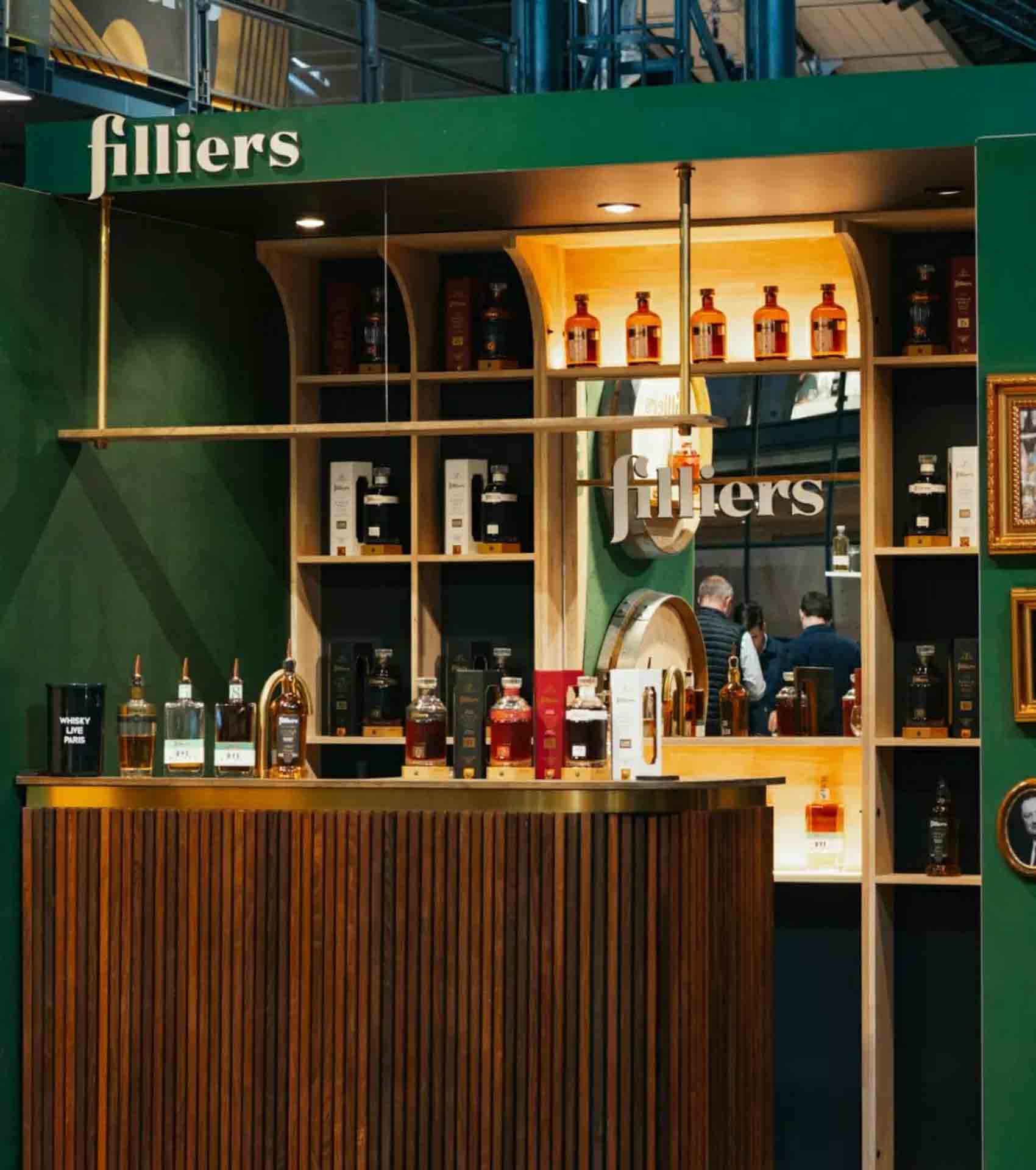
Photo credit: Filliers
Belgium also has some fantastic jenever distilleries, including Filliers in the north of the country. Jenever, gin, and whiskey are all produced here, and the tour explored the differences and similarities between the three.
The tasting aspect of the experience was a highlight, and the barrel-aged jenever here was among the best I’d ever tried. It had a long-lasting finish and luxurious vanilla undertones.
Filliers (€€€) – Leernsesteenweg 5, 9800 Deinze, Belgium
Wynand Fockink
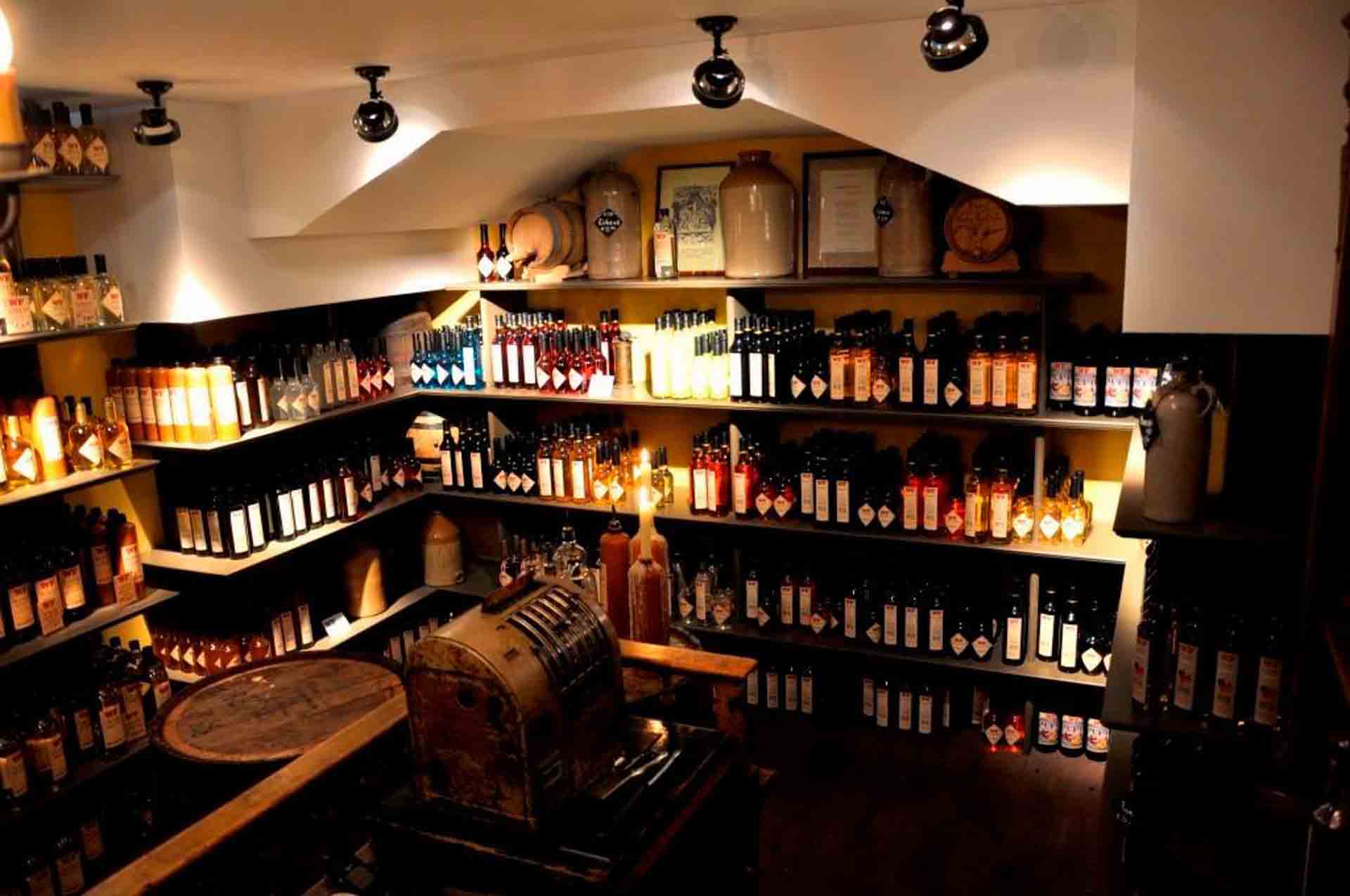
Photo credit: Wynand Fockink
Wynand Fockink is a revered Amsterdam liquor store that runs some excellent jenever sampling sessions. It’s been around since the 17th century, and the tasting room is as cozy and traditional as you’d expect from such a historic building.
I was lucky enough to sample a handful of jenever varieties, and I enjoyed the jonge version so much I decided to buy a bottle! Although the flavor was soft and neutral, there were some subtle hints of anise and coriander.
Wynand Fockink (€€) – Pijlsteeg 31, 1012 HH Amsterdam, Netherlands
Proeflokaal A. van Wees
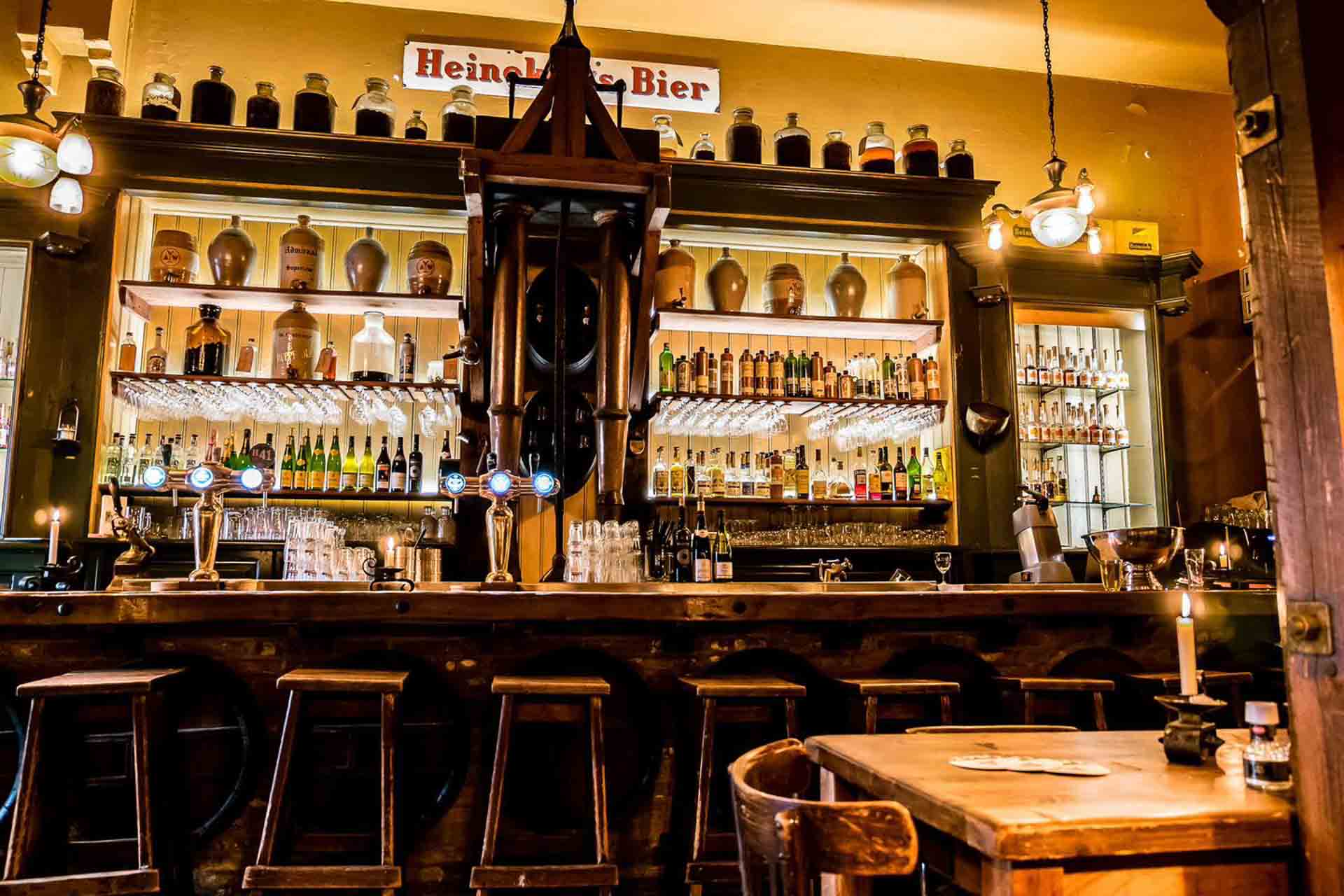
Photo credit: Proeflokaal A. van Wees
Proeflokaal A. van Wees is an enchanting former distillery that now operates as a bar and restaurant. I came across this place when I stopped in for some food a few years back but recently revisited to partake in a tasting experience.
The team here went into great detail about many of the jenevers they carried, including their refreshing lemon and berry versions.
Proeflokaal A. van Wees (€€) – Herengracht 319, 1016 AV Amsterdam, Netherlands
De Drie Fleschjes
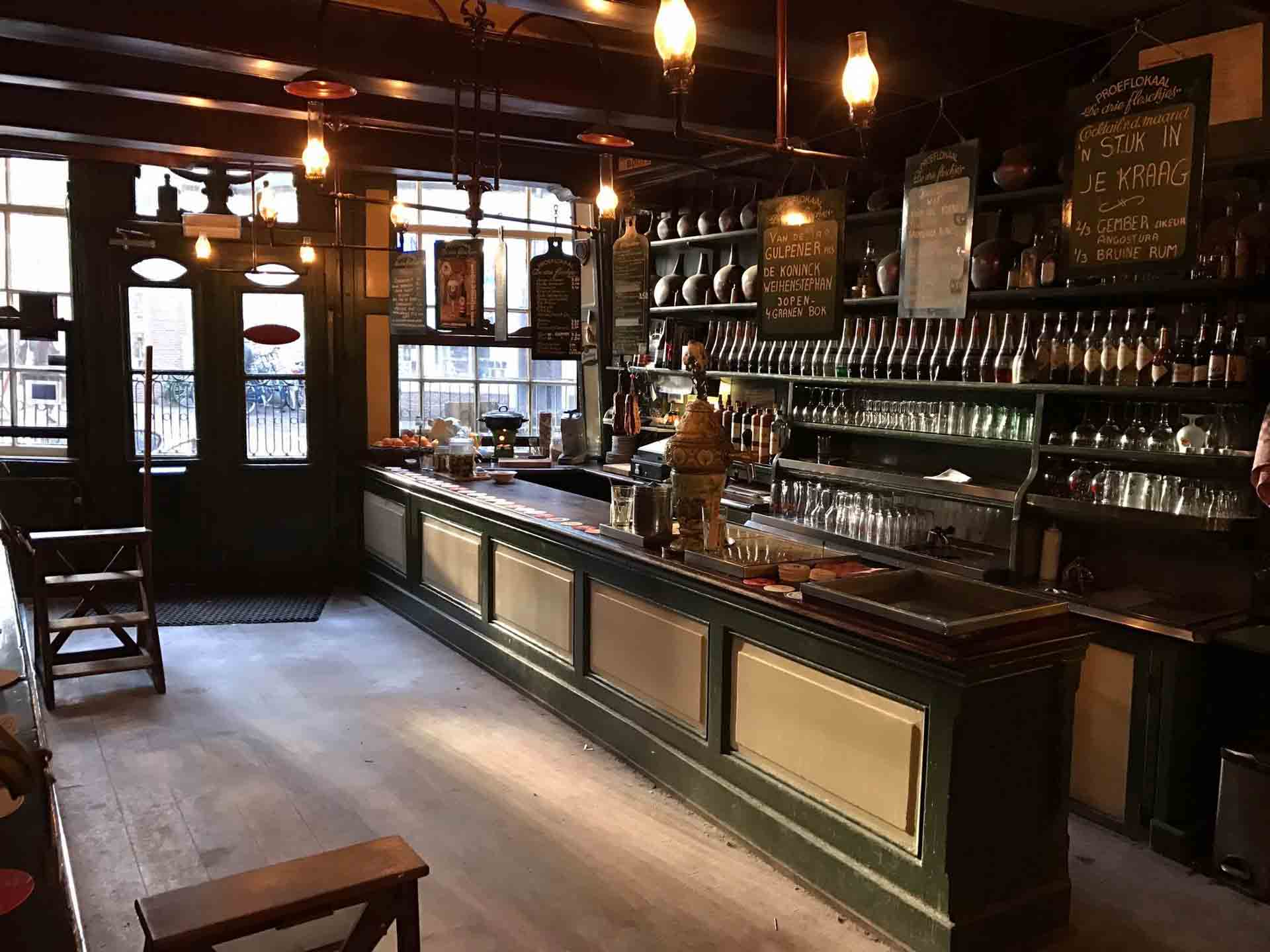
Photo credit: De Drie Fleschjes
De Drie Fleschjes is the perfect place to get acquainted with jenever, as the bartenders in this sophisticated haunt can talk you through the different varieties and serving styles.
It was here that I tried kopstootje for the first time. This involved following up a malty glass of jenever with a glass of bitter pilsner.
De Drie Fleschjes (€€) – Gravenstraat 18, 1012 NM Amsterdam, Netherlands
How to Enjoy Jenever
- Jenever is best enjoyed neat in a tulip-shaped glass that’s filled to the brim.
- To drink jenever like a local, try drinking the first sip without picking up the glass.
- Oude or old jenever is usually served as a digestif after dinner, while jonge or young varieties are seen as pre-meal aperitifs.
- Kopstootje, meaning ‘little headbutt,’ is a popular drinking technique in The Netherlands, during which you chase your jenever with a cold brew.
- If you’re interested in trying jenever-based cocktails, try some of these mouthwatering recipes at home.
Conclusion
No trip to Amsterdam, or anywhere in The Netherlands, for that matter, is complete without tasting a glass or two of jenever. It might be an acquired taste, but it’s an authentic Dutch one at that!
Sources:
Eating Europe – Amsterdam Eating Europe. (n.d.). Amsterdam food tours. Eating Europe. Retrieved February 13, 2025, from https://www.eatingeurope.com/amsterdam/
Imbibe Magazine – Genever Cocktails Imbibe Magazine. (2020, March 4). Genever cocktails: The spirit of the Netherlands. Imbibe. Retrieved February 13, 2025, from https://imbibemagazine.com/genever-cocktails/
Bols Cocktail Experience Bols. (n.d.). The cocktail experience. Bols. Retrieved February 13, 2025, from https://bols.com/pages/cocktail-experience
Nolet Distillery Nolet Distillery. (n.d.). Nolet Distillery: Crafting premium spirits. Nolet Distillery. Retrieved February 13, 2025, from https://www.noletdistillery.com/en/
Filliers Distillery Filliers Distillery. (n.d.). Filliers Distillery: Belgian heritage and craft spirits. Filliers Distillery. Retrieved February 13, 2025, from https://filliersdistillery.com/en/
Wynand Fockink Wynand Fockink. (n.d.). Wynand Fockink: Traditional Dutch spirits. Wynand Fockink. Retrieved February 13, 2025, from https://wynand-fockink.nl/
Proeflokaal Van Wees Proeflokaal Van Wees. (n.d.). Proeflokaal Van Wees: A taste of Dutch tradition. Proeflokaal Van Wees. Retrieved February 13, 2025, from https://proeflokaalvanwees.nl/en/
De Drie Fleschjes De Drie Fleschjes. (n.d.). De Drie Fleschjes: Amsterdam’s famous jenever bar. De Drie Fleschjes. Retrieved February 13, 2025, from http://dedriefleschjes.nl/

